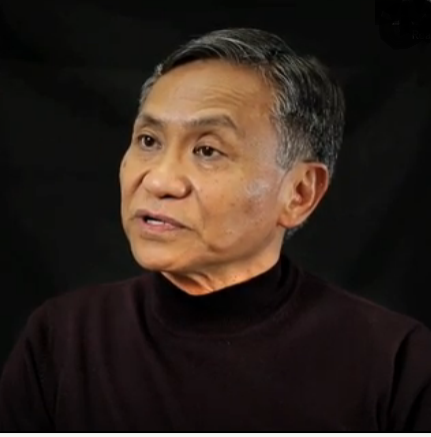Courting the AAPI Independents

By Sunita Sohrabji
The large, largely untapped bloc of Asian American Independent voters could deliver the win to Democratic Presidential candidate Kamala Harris or her opponent, Republican Donald Trump in an extremely tight race.
The New York Times/Siena College poll, released one day ahead of the September 10 debate, showed Trump leading Harris by 1 point, with a margin of error at +/- 2.8 points. The two are in a tie in the critical swing states of Pennsylvania, Nevada, and Arizona. Harris edges out Trump by the slimmest of margins in Wisconsin, Michigan, and North Carolina, while Trump prevails by 1 point in Georgia.
The critical swing states are home to about 1.75 million Asian Americans, Native Hawaiians and Pacific Islanders who are eligible to vote. They may represent just 3 or 4% of the voting population in their states, but that small percentage could deliver the margin of victory.
Up for grabs
At a September 6 Ethnic Media Services news briefing, Republican strategist Rina Shah said the huge bloc of AANHPI Independents is up for grabs by any party who actively engages with the community. The 2024 Asian American Voter Survey revealed that less than 42% of AANHPI voters had been contacted by either party.
Immigration reform, education, educational equity, and economic opportunity are key issues that register with AANHPI voters of either party, said Shah. Both parties need to engage more directly with the AANHPI community through not only targeted outreach, but also by addressing specific local concerns, she said, adding such outreach could include hosting community events, working with local leaders, and creating policies that address the unique needs of the community.
“To court the growing independent AANHPI vote, it’s going to take a mix of relevant policy focus as well as genuine engagement,” said Shah.
Many Republicans are dissatisfied with Trump at the top of the ticket, said Shah, who in 2016 headed up Republican presidential candidate Evan McMullin’s bid for the White House. She noted that they may vote for Harris at the top of the ticket, but continue to vote Republican in down-ballot races.
First-time voters
Fifteen million AANHPIs are eligible to vote, noted APIAVote President Christine Chen. In 2020, about 65% came out to vote. In critical battleground states, roughly one out of four AANHPIs were voting for the first time. In 2020, President Joe Biden won Georgia by less than 12,000 votes. The number of AAPIs who voted in 2020 in Georgia was over 142,000, and 26% were first-time voters, said Chen.
“If you do the math, that’s about 39,000 voters, three times the margin of victory. So these are concrete ways and numbers that we’re seeing where we actually are making a difference,” she said.
Bread and butter issues, along with immigration, and crime are among the most important issues for AANHPI voters, but Chen said that a significant number of voters see little difference in which party can successfully tackle those issues.
‘The reason for victory’
“The AANHPI vote is very significant,” said Shekar Narasimhan, chairman and founder of the AAPI Victory Fund. “I prefer actually, instead of saying that we are the margin of victory, to saying now that we are the reason for victory,” he said, speaking from the battleground state of Michigan, where he had organized a massive Get Out the Vote effort.
Narasimhan agreed that AANHPI voters of any persuasion need to be more effectively courted. Asian Americans are among the most active on social media, but in 2020, the first truly virtual year for campaigning, more than half the community was not reached.
“Candidates don’t know how to talk to us, which language to reach, which communities to talk to, the WhatsApp channels that we frequent, or the television. And therefore, there is an absence of information,” said Narasimhan, who noted that a huge percentage of AANHPIs are low-information voters. “We tell every candidate to show up in our communities, talk to our voters about the issues that matter to this community,” he said, noting critical issues include immigration, and access to capital for small businesses.
Asian American conservatism
University of San Francisco Professor Dr. James Zarsadiaz discussed the history of Asian American conservatism. Until the 1990s, Asian Americans traditionally voted Republican, believing that the party was aligned with their values of traditional families and supporting economic growth. George HW Bush successfully courted AAPI voters in 1992, and Bob Dole followed in 1996, though there was also considerable enthusiasm for Democratic candidate Bill Clinton.

The year 2000 saw a dramatic shift, as AAPIs voted for Democratic Presidential candidate Al Gore, who won the popular vote, but lost the electoral college. A wave of anti-Asianism, along with the new “hard right policies” of House Speaker Newt Gingrich’s Congress made many AAPIs question their loyalty to the Republican Party, said Zarsadiaz, who is working on a book, “The Asian American Conservative.”
‘Soft on crime’
But the shift left may be turning again. “There are a lot of registered Asian American Democrats who are starting to move more right, voting for maybe central left or more moderate Democrats, as opposed to backing folks who are more liberal or more progressive,” said Zarsadiaz.
During the COVID-19 pandemic, which brought with it a wave of anti-Asian hate crimes, Zarsadiaz said many AANHPIs felt unsupported by the Democratic party, which has been characterized as “soft on crime.” — Ethnic Media Services













